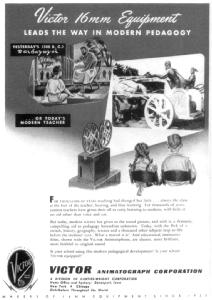Histories of the Digital Future
All academics know that it is now possible to conduct much research without leaving the computer screen. The digitisation of archives, the on-line availability of museum collections, search tools such as Google Scholar and WorldCat, file-sharing and the streaming of film and video, have transformed the material practices and possibilities of research across all disciplines. However, in the fields of film and television studies, our very objects of study are under rapid transformation. The ‘digitisation’ of film and television production – which can mean anything from shooting with lightweight dv cameras, to digital editing and computer-generated effects – is matched by the multiplication of ways in which viewers can watch and record material, from iPhones and YouTube to digital projection in their sitting rooms. Students now arrive at university more ‘at home’ with digital technology than many of their lecturers. It is in this context that the Department of Film and Television Studies has decided to undertake a shared exploration of ways of conceptualising the current transformation of our objects of study which are being effected by the shift from analogue to digital format.
Our project proposes a ‘long’ audio-visual twentieth century as its structuring object of study, which moves from pre-cinematic 19thC experimentation to postcinematic 21stC individualised consumption. It is informed by arguments by scholars such as Lynn Spigel (HRC Fellow in 2008), Vincent Mosco, Siegfried Zelinski and David Morley that it is necessary to approach ‘the digital future’ through the historical understanding of earlier technological change. We will be reading, inviting themed speakers and reflecting on our research and pedagogy together with current and former students to share our expectations for our disciplines in the 21st century. One example, in relation to pedagogy, indicates our approach: Charles Acland’s historical study of the introduction of various audiovisual teaching aids (epidiascopes, overhead projectors, and 16mm projectors) into the classroom in the period after the second world war shows that the arguments for these ways of teaching, and the benefits claimed for students, are very similar to the claims currently being made for the ‘wired’ classroom. So while there are undoubtedly new aspects of the current situation, assessing how and what is new is more complex than some exponents of ‘the digital revolution’ suggest.
Charlotte Brunsdon
Department of Film and Television Studies
Seminars and Events
Histories of the Digital Future: ‘Archives of the Audio-Visual’
Thursday, May 19th 2011 11.00 – 3.45 Millburn House, 0.28
Speakers include Carolyn Steedman, Charles Barr, Amy Holdsworth and members of the Department of Film and Television Studies
For more information please click here
Recent events:
Histories of the Digital Future Seminar Speakers have included Patrik Sjöberg, Robert C. Allen, Al Rees, Sarah Kember and Joanna Zylinska.
In February 2010 the department hosted the one-day interdisciplinary conference 'Glorious Technicolor, Breathtaking CinemaScope': The Spectacle of Technology in Screen Media. This conference presented a wide-ranging study of spectacularised screen technologies: exploring instances where focus is drawn to the medium rather than its content. It featured papers from an array of disciplines, spanning subjects that range from before the birth of cinema to the digital future. Keynote Speakers: Alison Griffiths (CUNY); William Boddy (CUNY); Helen Wheatley: (University of Warwick)

